
Ancient City of Sigiriya, World heritage site
- Sigiriya was no mere fortress, gloomy and forbidding, as others are. It is one of the best-preserved ancient cities where the layout of the buildings, gardens, and pathways are still clearly evident. It displayed the collective effect of the science of town planning and water management, architecture, construction and landscaping, and arts in the 5th century AD in Sri Lanka.
The name “Sigiriya” literally means “Lion Rock” has a history far beyond the 5th century. Some caves in the base of the rock contained drip-edged inscriptions belongs to the 2nd century BC to 1st century AD describing the donation of those caves to Buddhist monks. History from the 1st to 4th century not clearly mentioned in the ancient chronicles.
However, from 477 to 495 BC, Sigiriya was in its zenith under the kingship of Kashyapa who built it as a well-planned glorious city and citadel and the political hub of Sri Lanka.
If you can imagine the stupendous sight of the rock that was crowned with the palaces, the marble white walls and brazen roofs and jewelled finials reflecting the blinding light of the sun, and the great mural emblazoned on the rock-face carried the maidens it depicts halfway to the clouds as though they were in truth “apsaras”, heavenly damsels, inhabitants of the sky region where the gods dwell in radiant light.
Since King Kashyapa’s reign was ended in 495, Sigiriya becomes a monastery and lasting until the 12th century. From the 13th century capital of the country shifted towards the southwest of the country allowing the whole Rajarata region including Sigiriya become abandoned and swallowed by the forest. Since 16th-century colonial power start arising over the country nobody interested in the Sigiriya.
During the colonial period in 1831, Jonathan Forbes, a Scottish officer heard about Sigiriya and decided to search it with the help of locals. After several attempts, he was able to find the surrounding gardens and the moat at the base of the rock. Finally, two British civil servants A. Y. Adams and J. Bailey were able to reach the top of the Sigiriya rock in 1853.
Under the leadership of H.C.P.Bell, the first Archaeological Commissioner in Ceylon, Systematic archaeological excavations have begun in 1895.
The Site
Sigiriya city and citadel has a very complex rampart system. The city was laid out in a large square area, walled with a moat in the west and a walled rectangle in the east. At the centre stood the great rock - the citadel. Within the fortifications, terrace upon terrace from wall to citadel’s foot clustered and climbed the dwelling places and ancillary buildings of a city fair as peace. To the south lay further fortified outworks.
At the top of the flat rock upper palace was located. At the middle-level terrace Lion gate, the mirror wall and frescoes located. Lower palaces were located behind the lower gardens, moats, and ramparts at the ground level. At the entrances, there were five gates were placed.
The main areas to explore at present are:
The Gardens
The Gardens of Sigiriya can be rank among the ancient gardens of the Romans such as the gardens of Pompeii and Herculaneum. The three distinct gardens of water gardens, cave and boulder gardens, and terraced gardens were linked together to form such a unique landscaped gardens in the world. Those are well preserved and can be seen as it is, even today. The most sophisticated hydraulic technologies used in the water garden were unique and most importantly some of them are still working today.
The Macrosystem of the water garden consists of Sigiri Maha Wewa, the man-made lake starting south of the rock, and a series of moats fed from the lake. The microsystem consists of the water control and retaining systems at the summit and horizontal and vertical drains cut into the rock and underground conduits made of cylindrical terracotta pipes at various levels. The higher level from the water garden is Boulder Garden. Every rock and boulder had buildings of brick and timber. The pathways are winding through natural boulders. This boulder garden has interesting places to explore. Those are;
Cistern Rock: that has a large cistern made of huge slabs of granite.
Audience Hall Rock: that has a 5 m long throne carved out of the rock.
Cobra Hood Cave: It is named due to the shape of this boulder and used by the Buddhist monks.
Preaching Rock: The tiered platforms of this boulder are believed to be used by orating monks.
The Terrace Garden at the base of the rock is fashioned out of the natural hill, made with rubble retaining walls, each terrace running in a concentric circle around the rock, each rising above the other.
The Mirror Wall
On the way to Lion's Platform, a highly polished plaster wall called Mirror wall can be seen. It is believed that the wall was coated with polished lime, egg white, and honey. It still has a reflective sheen. There are nearly about 1500 items of graffiti on this mirror wall composed by the monks and pilgrims who flocked to Sigiriya from around the country during the 7th to 12th centuries. Those prose or poetry were written on varying subjects such as love, irony, and experiences, and most of them written in Sinhalese, but some are written in Sanskrit and Tamil.
Frescos
During King Kasyapa’s period, Sigiriya was decorated with hundreds of pictures of graceful female figures and appears to be a gigantic picture gallery. After King Kasyapa’s demise Sigiriya has converted into a monastery again. As a result, most of the paintings were wiped out in order to minimize the distraction for the meditation. However, a total of 21 surviving frescoes are still intact just above the mirror wall, on the way to Lion's Platform.
Though those are classified as the Anuradhapura era paintings, the painting style in Sigiriya is unique. It is closely resembling with Ajanta Cave paintings in India. There are two broad opinions about the identity of graceful female figures in the frescoes among the archaeologist. The first opinion is they portray human beings either queens, princesses, and maids of the court of King Kasyapa in a secular or religious ambiance. The second opinion is they portray celestial beings as either semi-divine nymphs called “apsaras” or a class of divine beings like goddesses.
Whatever the opinion would be, the Sigiriya frescoes, the most remarkable objects of Sri Lankan artistic heritage provide glimpses of how impressive Sigiriya at its zenith.
Lion’s Paws
While you are climbing Sigiriya you will pass the water garden, boulder garden, mirror wall, and frescoes and emerge to a platform at the northern end of the rock. At this platform, two huge paws of a lion towering against the rock can be seen. It is the only remains of the opened mouth giant brick lion where the staircase leading to the palace garden. The steps leading between the paws of the lion into his mouth. It is believed that the name Sigiriya for this rock has derived due to this gigantic figure.
Upper Palace on the Summit
The flat summit of the rock covering an area of around 1.2 hectares would have been completely covered with buildings and gardens. The remains of the foundations have confirmed that. The multi-story palace with a bathing pool on the top of a rock with the comprehensive view of reservoirs, mountains, and forests around would suggest that Sigirita was not a fortress and would have been a royal palace of pleasure. It is remembering that the modern-day rooftop pool when you see the pond scooped out of solid rock measuring 27m x 21m in size.
According to the foundation, the layout of the ground plan has clearly visible. The palace occupies the lower eastern sections where the palace gardens at the south. There was a large rock-cut pool covering both the palace and the garden. At the palace, there was a granite throne, dancing terraces, a small pool, drinking water tanks, rooms for concubines, a small flower garden, and precariously positioned platforms for guards, the king's audience chamber, and his anteroom. Also, there is a huge throne in a semicircle where his advisors would sit.
- Sigiriya was no mere fortress, gloomy and forbidding, as others are. It is one of the best-preserved ancient cities where the layout of the buildings, gardens, and pathways are still clearly evident. It displayed the collective effect of the science of town planning and water management, architecture, construction and landscaping, and arts in the 5th century AD in Sri Lanka.
The name “Sigiriya” literally means “Lion Rock” has a history far beyond the 5th century. Some caves in the base of the rock contained drip-edged inscriptions belongs to the 2nd century BC to 1st century AD describing the donation of those caves to Buddhist monks. History from the 1st to 4th century not clearly mentioned in the ancient chronicles.
However, from 477 to 495 BC, Sigiriya was in its zenith under the kingship of Kashyapa who built it as a well-planned glorious city and citadel and the political hub of Sri Lanka.
If you can imagine the stupendous sight of the rock that was crowned with the palaces, the marble white walls and brazen roofs and jewelled finials reflecting the blinding light of the sun, and the great mural emblazoned on the rock-face carried the maidens it depicts halfway to the clouds as though they were in truth “apsaras”, heavenly damsels, inhabitants of the sky region where the gods dwell in radiant light.
Since King Kashyapa’s reign was ended in 495, Sigiriya becomes a monastery and lasting until the 12th century. From the 13th century capital of the country shifted towards the southwest of the country allowing the whole Rajarata region including Sigiriya become abandoned and swallowed by the forest. Since 16th-century colonial power start arising over the country nobody interested in the Sigiriya.
During the colonial period in 1831, Jonathan Forbes, a Scottish officer heard about Sigiriya and decided to search it with the help of locals. After several attempts, he was able to find the surrounding gardens and the moat at the base of the rock. Finally, two British civil servants A. Y. Adams and J. Bailey were able to reach the top of the Sigiriya rock in 1853.
Under the leadership of H.C.P.Bell, the first Archaeological Commissioner in Ceylon, Systematic archaeological excavations have begun in 1895.
The Site
Sigiriya city and citadel has a very complex rampart system. The city was laid out in a large square area, walled with a moat in the west and a walled rectangle in the east. At the centre stood the great rock - the citadel. Within the fortifications, terrace upon terrace from wall to citadel’s foot clustered and climbed the dwelling places and ancillary buildings of a city fair as peace. To the south lay further fortified outworks.
At the top of the flat rock upper palace was located. At the middle-level terrace Lion gate, the mirror wall and frescoes located. Lower palaces were located behind the lower gardens, moats, and ramparts at the ground level. At the entrances, there were five gates were placed.
The main areas to explore at present are:
The Gardens
The Gardens of Sigiriya can be rank among the ancient gardens of the Romans such as the gardens of Pompeii and Herculaneum. The three distinct gardens of water gardens, cave and boulder gardens, and terraced gardens were linked together to form such a unique landscaped gardens in the world. Those are well preserved and can be seen as it is, even today. The most sophisticated hydraulic technologies used in the water garden were unique and most importantly some of them are still working today.
The Macrosystem of the water garden consists of Sigiri Maha Wewa, the man-made lake starting south of the rock, and a series of moats fed from the lake. The microsystem consists of the water control and retaining systems at the summit and horizontal and vertical drains cut into the rock and underground conduits made of cylindrical terracotta pipes at various levels. The higher level from the water garden is Boulder Garden. Every rock and boulder had buildings of brick and timber. The pathways are winding through natural boulders. This boulder garden has interesting places to explore. Those are;
Cistern Rock: that has a large cistern made of huge slabs of granite.
Audience Hall Rock: that has a 5 m long throne carved out of the rock.
Cobra Hood Cave: It is named due to the shape of this boulder and used by the Buddhist monks.
Preaching Rock: The tiered platforms of this boulder are believed to be used by orating monks.
The Terrace Garden at the base of the rock is fashioned out of the natural hill, made with rubble retaining walls, each terrace running in a concentric circle around the rock, each rising above the other.
The Mirror Wall
On the way to Lion's Platform, a highly polished plaster wall called Mirror wall can be seen. It is believed that the wall was coated with polished lime, egg white, and honey. It still has a reflective sheen. There are nearly about 1500 items of graffiti on this mirror wall composed by the monks and pilgrims who flocked to Sigiriya from around the country during the 7th to 12th centuries. Those prose or poetry were written on varying subjects such as love, irony, and experiences, and most of them written in Sinhalese, but some are written in Sanskrit and Tamil.
Frescos
During King Kasyapa’s period, Sigiriya was decorated with hundreds of pictures of graceful female figures and appears to be a gigantic picture gallery. After King Kasyapa’s demise Sigiriya has converted into a monastery again. As a result, most of the paintings were wiped out in order to minimize the distraction for the meditation. However, a total of 21 surviving frescoes are still intact just above the mirror wall, on the way to Lion's Platform.
Though those are classified as the Anuradhapura era paintings, the painting style in Sigiriya is unique. It is closely resembling with Ajanta Cave paintings in India. There are two broad opinions about the identity of graceful female figures in the frescoes among the archaeologist. The first opinion is they portray human beings either queens, princesses, and maids of the court of King Kasyapa in a secular or religious ambiance. The second opinion is they portray celestial beings as either semi-divine nymphs called “apsaras” or a class of divine beings like goddesses.
Whatever the opinion would be, the Sigiriya frescoes, the most remarkable objects of Sri Lankan artistic heritage provide glimpses of how impressive Sigiriya at its zenith.
Lion’s Paws
While you are climbing Sigiriya you will pass the water garden, boulder garden, mirror wall, and frescoes and emerge to a platform at the northern end of the rock. At this platform, two huge paws of a lion towering against the rock can be seen. It is the only remains of the opened mouth giant brick lion where the staircase leading to the palace garden. The steps leading between the paws of the lion into his mouth. It is believed that the name Sigiriya for this rock has derived due to this gigantic figure.
Upper Palace on the Summit
The flat summit of the rock covering an area of around 1.2 hectares would have been completely covered with buildings and gardens. The remains of the foundations have confirmed that. The multi-story palace with a bathing pool on the top of a rock with the comprehensive view of reservoirs, mountains, and forests around would suggest that Sigirita was not a fortress and would have been a royal palace of pleasure. It is remembering that the modern-day rooftop pool when you see the pond scooped out of solid rock measuring 27m x 21m in size.
According to the foundation, the layout of the ground plan has clearly visible. The palace occupies the lower eastern sections where the palace gardens at the south. There was a large rock-cut pool covering both the palace and the garden. At the palace, there was a granite throne, dancing terraces, a small pool, drinking water tanks, rooms for concubines, a small flower garden, and precariously positioned platforms for guards, the king's audience chamber, and his anteroom. Also, there is a huge throne in a semicircle where his advisors would sit.

 +39 - 39 - 307 6 3730
+39 - 39 - 307 6 3730 +94 - 74 - 000 9208
+94 - 74 - 000 9208







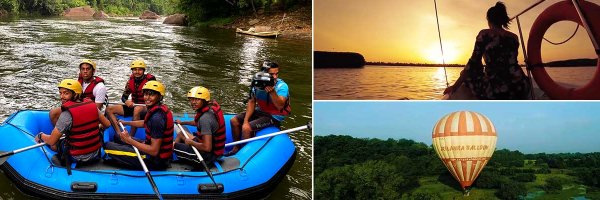

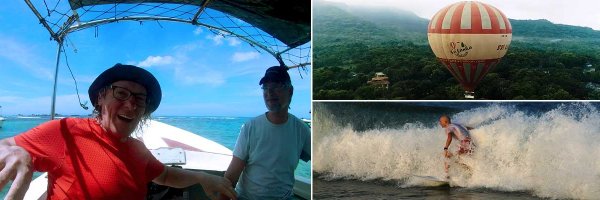



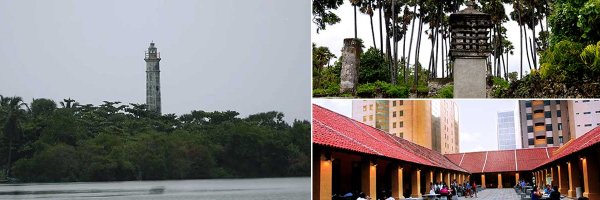
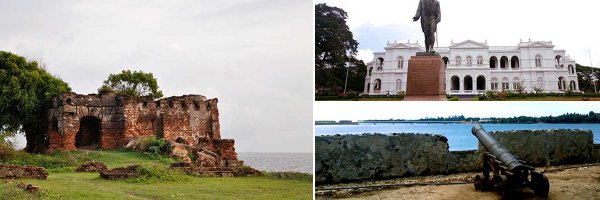
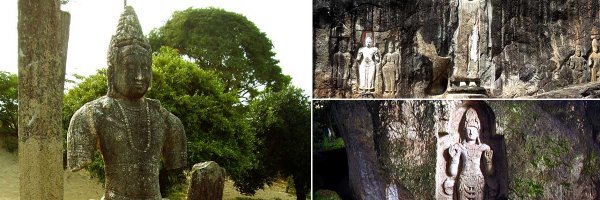

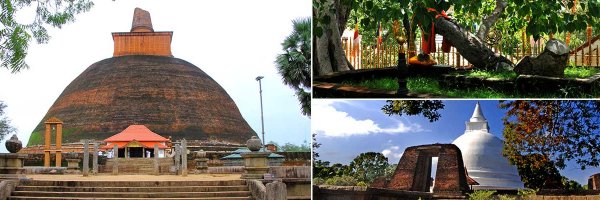



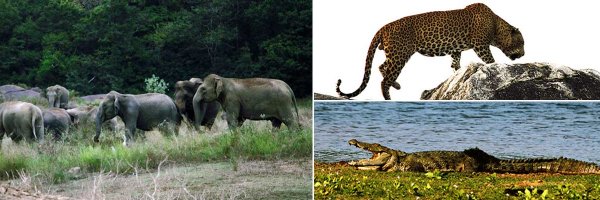


Share this page